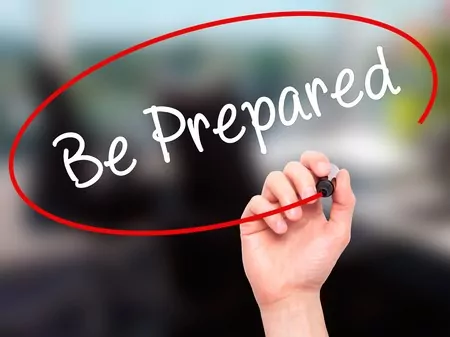Authors: Anne Marie Gaffney & Kate Coleman
Are you concerned about your upcoming Regulatory Inspection? How do you prepare for it and prepare your Subject Matter Experts (SMEs)? Is your Inspection Readiness Plan in place?
The development of a detailed Inspection Readiness Plan will reduce your concerns and help you work towards a successful Inspection outcome.
Your Inspection Readiness Plan should involve a cross-functional team of the appropriate level of personnel in your organization. This team is key to ensuring the site is prepared for the Inspection and ensuring identified actions are completed in advance of the Inspector arriving on site. The Plan should include details of the logistics of the Inspection i.e. what room it will take place in, where the war room or back-up room will be located, who the scribe will be etc. Other items to consider in the lead-up to the Inspection are your SOP for handling inspections, identifying and preparing the SMEs, and identifying the main areas of weakness in order to practice delivery of the site position.
Review your Handling of External Inspections SOP. It should include:
- Details relating to notification of an inspection to the site team (for announced inspections) once received from the Health Authority.
- For an unannounced inspection, a mechanism for notification of the Inspector’s presence on site.
- Details on how document flow will be managed e.g. communication of a request to the wider team, review of a document prior to submission to the Inspector and control of original and any copied documents, if provided, to the Inspector.
- Details on how the record of the Inspection should be maintained; this should include the documentation and version number provided to the Inspector, details of any documentation taken off site by the Inspector, daily scribe notes, list of personnel met and the opening and closing meeting minutes.
Identification and Preparation of Subject Matter Experts.
Remember that the most technical person may not be the best person to place in front of an Inspector. FDA Inspectors are trained to interrogate and investigate and draw conclusions from what they are told. They are technically competent in their area of inspection and are particularly strong in interrogating and eliciting information. Therefore, select your SME carefully. It is key that you understand the FDA interrogation techniques and simulate inspection interviews in preparation.
Ensure the SMEs understand the different questioning techniques used. Closed-ended questions will elicit a Yes/No answer e.g. Was a deviation raised for this? Open-ended questions on the other hand can elicit a lot of information e.g. “Tell me about this deviation.” A leading question could be “Do you believe this deviation was handled appropriately?”. The inspector could make an assumptive question e.g. “Is a deviation not required to be raised for minor non-conformances?” where they are making an assumption in asking the question.
The SMEs should always answer with a fact-based response, never an opinion! A system overview in a policy or procedure maybe used during the Inspection response to help support the response. Remember, responses are never off the record i.e. during lunch time or towards the end of the week when the Inspector appears more casual or relaxed. The SME must remember this is an official inspection at all times. Answer the specific question and stop speaking! This maybe hard, particularly if there is a silence. The SME should never feel they have to fill that silence! Listen to the question properly and reword the question to confirm your accurate understanding of the question. And….Always tell the truth. Training sessions should be carried out to simulate an inspection setting and ensuring your SME is prepared appropriately.
Identify your areas of weakness in advance so they can be corrected or prepared.
If an issue can’t be eliminated in its entirety, prepare how the Company shall discuss the issue in a way that clearly represents how the issue was identified and how it was, or is being addressed. What are the major deviations that occurred since the last inspection? Are you satisfied with the manner in which they were closed? Were the CAPAs appropriate and effective? Have you assessed your CAPA effectiveness? What risk assessments have been completed? Are you comfortable defending your risk approach? Where there are action plans still in place, can you show the timeline of actions and progress to date using the appropriate quality system?








